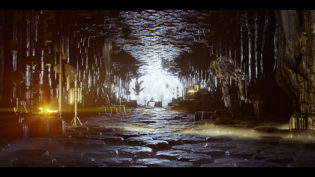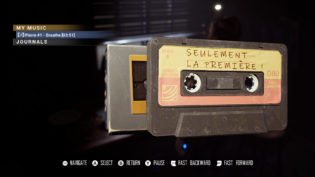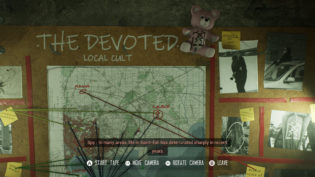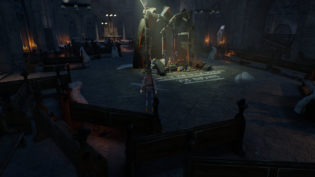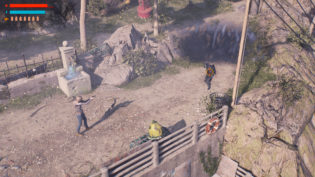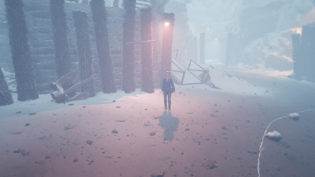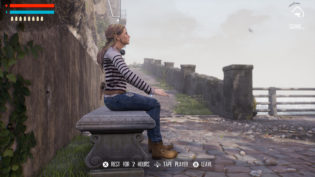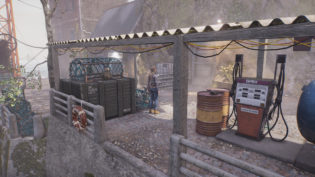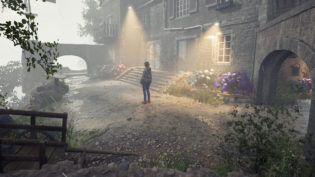As more and more classic survival horror adjacent action adventure games arrive lately, I keep being occasionally pleasantly surprised by the inventiveness of some of the projects. Even if the title ultimately disappoints, the creativity behind it can show new ways this genre can be done, as if it’s finally trying to break the mould it has been stuck in for decades. Broken Pieces is not a disappointment, however, even if it is a bit of a mess.
This is an action adventure with a sci-fi/eldritch horror story twist elements and very light, but impactful, survival concepts. It plays as a third person perspective game with fixed camera angles, although each angle is actually 2 angles you can switch between at will with a press of a button. The character controls are handled with camera-relative/directional controls, so those who have an allergy of tank controls need not worry. You get the typical for the genre item collection and usage, puzzles and mini-games, some of which are optional, and combat. Combat here is quite poor, but I have to credit the developers for seemingly basing it on Parasite Eve 2, which is a great example to follow. Sadly, this has none of the tightness and nuance of PE2 and controls very awkwardly and some of the later game (and optional) challenge fights are stupid. Also stupid is the fact that combat is basically partially random and pops up like a jRPG random encounter. There are fights that seem required and somewhat consistent, but a lot of the others can not happen or have a completely unpredictable amount of enemies.
What makes these base mechanics interesting is the attempt to set it all on a concept of a daily schedule and light survival features. Essentially, you have a timer and once you wake up in the morning you have until 20:00 each day to do whatever you plan before it gets too dangerous and you need to go home and sleep. Traveling between major locations takes time (that is shown above the door that takes you there), so you have to be careful about where you are as the deadline gets closer. Crafting resources that you’ve found during the day can be put into the item box and will turn into resources you can use in the morning. It’s extremely basic and really is all about higher damage limited ammo type for combat apart from rare moments when you run out of space in your inventory and decide to backtrack home instead of dropping items. But it does set up a very cool pattern where you plan your day and follow certain simple rituals.
It’s also neat that many of the things you get are optional, a lot of things can be done out of order (though there is an “optimal” way to play) and there’s a genuine sense of discovery as you learn more and more about the strange situation the main character has found herself in. The conclusion to this whole story is underwhelming, have to say, and the developers are seemingly busy with thinking of a follow up already, but there’s enough interesting stuff here already to be fun. Even if the English translation (the game is originally French) is problematic at times.
Speaking of problematic – some of the poor design choices in the game stand out especially well in contrast to how many cool things are in the game. One optional mini-game is extremely unfun, some of the puzzles are more of a busywork thing than a fun challenge. One optional challenge puzzle, for example, is extremely poorly designed and on top of it you can do it incorrectly, but the game has no way of telling you that you’ve failed or providing you with a restart option. So you must realize what happened and load the last save to undo the situation. And the whole fixed camera gimmick hurts the game far more than it helps, as more often than not you won’t see stuff that you should be able to see, unless you enter the first person mode, which shouldn’t be a requirement since your “puzzle” here is “we designed the camera system really badly and you must suffer for it” and it feels.
Still, I have to say that despite many frustrating elements, Broken Pieces has left me inspired. It’s full of cool ideas, some of which are implemented well, and it tries to do something fresh and new out of something old and familiar. Instead of just following trends or copying formulas that have worked for decades by the numbers. I recommend checking out the game, though if your patience with crappy combat is lower than mine, you can set the difficulty to disable lots of that. The game won’t become a smooth experience, but it’s an experience still worth having.


